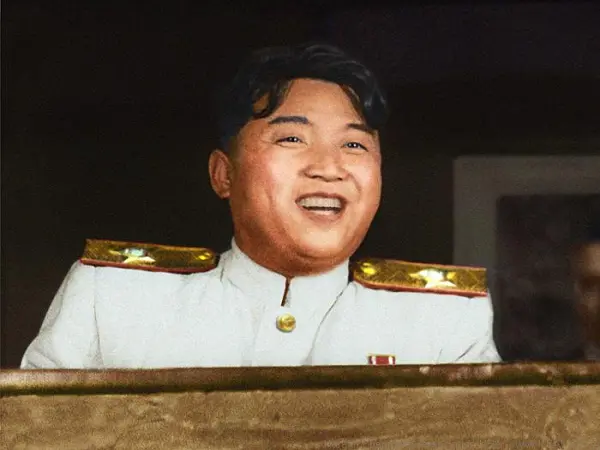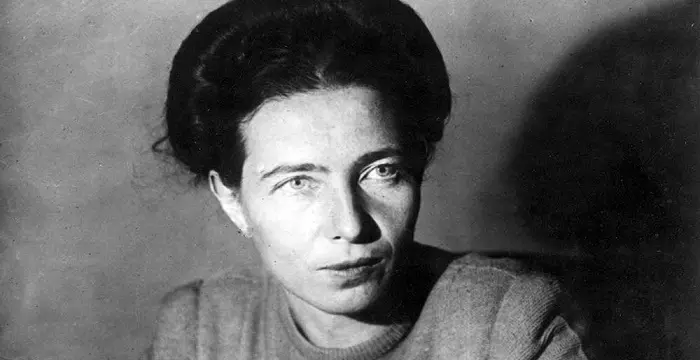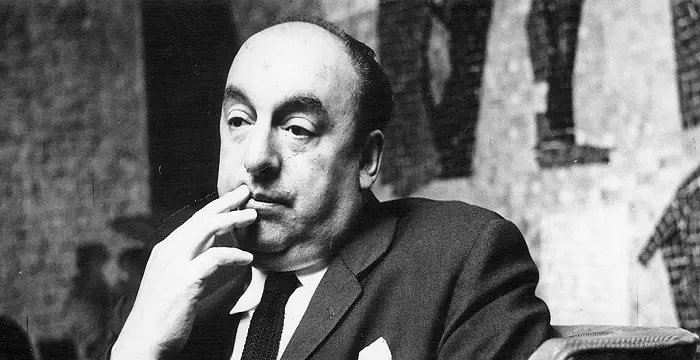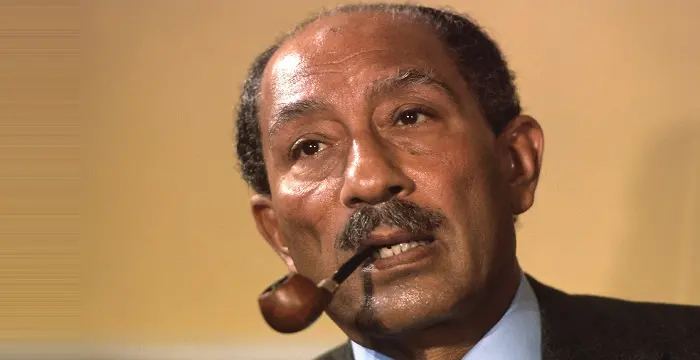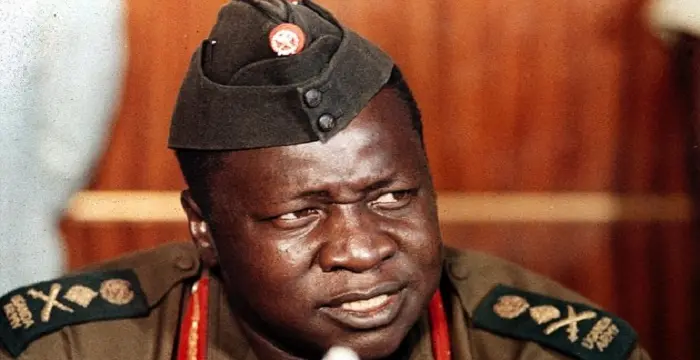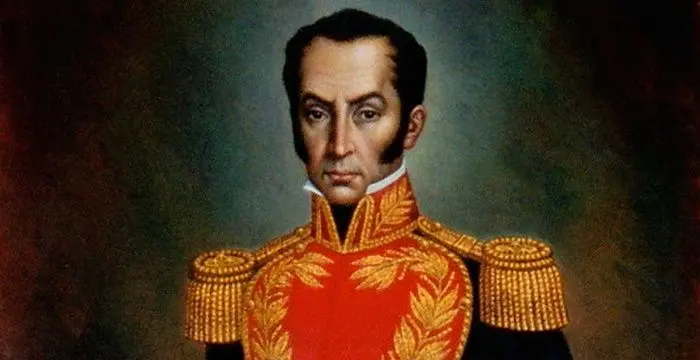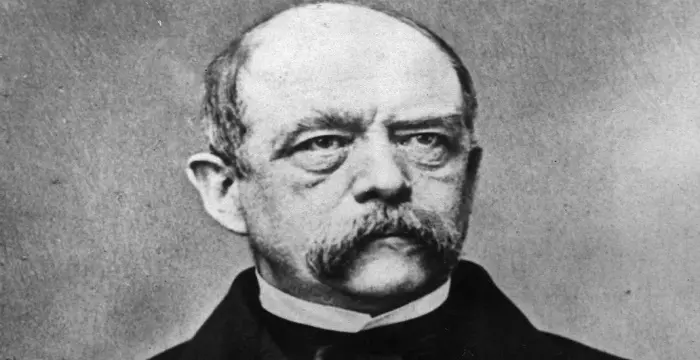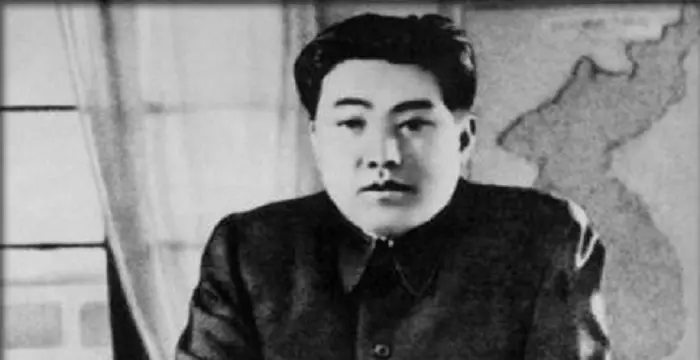
Kim Il-sung - Former President of North Korea, Timeline and Life
Kim Il-sung's Personal Details
Kim Il Sung was the autocratic ruler who established the Republic of North Korea, after the country was freed from Japanese occupation
| Information | Detail |
|---|---|
| Birthday | April 15, 1912 |
| Died on | July 8, 1994 |
| Nationality | North Korean |
| Famous | Communists, Leaders, Presidents, Former President of North Korea |
| Ideologies | Communists |
| Nick names | The Great Leader, Eternal President |
| Spouses | Kim Jong-suk, Kim Sung-ae |
| Siblings | Kim Chul Joo, Kim Yong-ju |
| Known as | Kim Sŏng-ju |
| Childrens | Kim Jong-il |
| Founder / Co-Founder |
|
| Birth Place | Pyongyang |
| Political Ideology | Workers’ Party of Korea |
| Religion | Atheism, Presbyterianism |
| Height | 175 |
| Gender | Male |
| Father | Kim Hyong-jik |
| Mother | Kang Pan-sok |
| Net Worth | $5 billion |
| Sun Sign | Aries |
| Born in | Pyongyang |
| Famous as | Former President of North Korea |
| Died at Age | 82 |
Kim Il-sung's photo
Who is Kim Il-sung?
Kim Il-Sung is known as the founder and first president of the Democratic People's Republic of North Korea. Kim was born to a small peasant family but they were soon forced to flee following the Japanese occupation of his homeland. After moving to China, Kim soon became radicalised and joined forces that were committed to defying the occupiers. Even as an early teen, he was involved with armed resistance activity and as a young man he was promoted to a leadership role. Driven by his anti-Japanese sentiments, he sided with the Soviet Union in the World War, where he trained and fought along with the Soviet soldiers against the Japanese. He eventually rose to the ranks of a leader in the Soviet military. At the end of the war, he was in a prime position to take over the mantle of leadership of his newly-liberated country. Seizing the opportunity, Kim and his forces soon overruled the entire peninsula but faced stiff resistance from foreign countries. After a bitter and devastating war, the peninsula was split in half and he became the undisputed leader of the northern half. Combining Communist and Marxist ideology with his own brand of Korean self-reliance, he soon forged himself as the shining leader of a new country. After ruling his country with an iron grip for half a century, the supreme leader passed away, leaving his country in the hands of a virtual monarchy.
// Famous Leaders
Edi Rama
Edi Rama is the current Prime Minister of Albania. Check out this biography to know about his childhood, life, achievements, works & timeline.
Tecumseh
Tecumseh was a Native American leader of the Shawnee clan. This biography profiles his childhood, life and timeline.
Khalifa bin Zayed Al Nahyan
Sheikh Khalifa bin Zayed Al Nahyan is the current President of the United Arab Emirates (UAE). Check out this biography to know about his birthday, childhood, family life, achievements and fun facts about him.
Childhood & Early Life
Kim Song-ju was born on April 15, 1912 in Mangyondae, Heian-nando, Japanese Korea. His mother is recorded as being named Kang Pan-sŏk.
Due to widespread propaganda during his reign, many details about his childhood and family were obscured. He, however, claimed that he was raised by a Presbyterian family and that his maternal grandfather was a minister.
In 1920, his family fled to prevent persecution by the Japanese conquerors. They resettled their family in Manchuria, now part of China.
Career
Much of Kim's earlier career is obscured in propaganda. However, it is believed that he was a fervent anti-Japanese activist from his early teens.
In October 1926, he founded the 'Down With Imperialism Union'. This group's stated aim was to fight Japanese imperialism. Three years later, he joined the ‘South Manchurian Communist Youth Association’.
In 1932, he joined the ‘Communist Party of China’. At this time, Manchuria, where Kim lived, was still under Japanese rule.
In 1935, he joined the ‘Northeast Anti-Japanese United Army’. This was a guerilla offshoot of the Communist Party. Also in the same year, he adopted a nom de guerre of Kim Jong-Il. This is the name he would later be known by the rest of the world and his people.
In 1940, Kim and his troops were forced to flee as the Japanese forces advanced. They crossed the border into the Soviet Union to escape. He was soon being trained by the Soviet army.
Until the end of the war, he served as a major in the ‘Soviet Red Army’. In 1945, the Soviet Union declared war on Japan.
On August 15, 1945, the ‘Soviet Red Army’ entered Pyongyang and liberated it from the Japanese. Stalin, the leader of the Soviet Union, soon appointed Kim to be the leader of the newly independent Korea.
On February 8, 1946, he officially became the chairman of the ‘Interim People's Committee’. This made him the de facto leader of Korea.
He declared the foundation of the ‘Democratic People's Republic of Korea’ on September 9, 1948. This is the official title of the nation of North Korea.
On June 25, 1950, he ordered his forces to invade South Korea and capture the entirety of the peninsula. However, by October 19, American and South Korean troops had captured Pyongyang and forced him to flee to China.
Fighting continued until 1953, when a ceasefire between North and South Korea was signed. The agreement continues to be in force today.
In 1955, he invented 'Juche', his own religion and political ideology. He named political independence, economic self sustenance self reliance in defence, as the three pillars on which his ideology is developed.
In 1968, North Korean forces successfully captured the ‘USS Pueblo’ and her crew, an American naval vessel. The capture was a part of his strategy to disrupt the ruling Government which was backed by the US.
In 1972, he ordered a new constitution to take effect, making him the permanent president of the country. Prior to this, Kim had been an unelected leader.
In 1991, he successfully lobbied the United Nations to admit his country as a member nation. In the same year, he appointed his son as head of the military, whom he had named his successor.
In 1992, he negotiated a series of compromises with South Korea. These included a non-aggression pact and economic exchange. A year later, he reversed his earlier position. North Korea cut off all official contact with South Korea.
In 1994, Kim began a program of nuclear power development. He also ordered that work begin on developing a ballistic nuclear missile.
Kim died on July 8, 1994 shortly before a scheduled summit with the president of South Korea.
Major Works
Kim Jong-Il has been the Eternal President of the Republic of North Korea since September 9, 1948, a position that he continues to hold posthumously. The autocratic leader was the architect of a political ideology ‘Juche’, which was inspired by the ideals of Stalin, the Russian dictator.
Personal Life & Legacy
Kim Jong-Il exchanged the nuptial vows with Kim Jong-suk, before World War II. She died in 1949. This marriage produced two sons, including Kim Jong-Il, who succeeded his father as president of North Korea. Kim's grandson Kim Jong-Un is the current leader of North Korea.
He married Kim Sung-ae, his second wife, in 1952. Reports indicate that they had three children.
This controversial dictator is rumored to have had many mistresses, including Kim Hyon-nam, and an unknown number of children from these relationships.
Trivia
Although this famous leader died in 1994, he is still legally the president of North Korea. According to official propaganda, his birth was heralded by a rainbow shining over a sacred mountain.
This autocratic leader ordered his doctors to keep him alive until the age of 100. As a result, they gave him many blood transfusions from healthy young men and women.
// Famous Communists
Simone de Beauvoir
Simone de Beauvoir was an eminent French writer, intellectual, activist, and philosopher. This biography profiles her childhood, life, thoughts, achievements and timeline.
Karl Marx
Karl Marx was a Prussian-German philosopher, revolutionary, historian and socialist whose communist ideologies and works laid the foundation for ‘Marxism’. Explore this biography to learn more about his childhood, life achievements, works & timeline.
Pablo Neruda
Pablo Neruda was a Chilean poet, politician and Nobel laureate. Go through this biography to learn more about his profile, childhood, life and timeline.
Kim Il-sung biography timelines
- // 15th Apr 1912Kim Song-ju was born on April 15, 1912 in Mangyondae, Heian-nando, Japanese Korea. His mother is recorded as being named Kang Pan-sŏk.
- // 1920In 1920, his family fled to prevent persecution by the Japanese conquerors. They resettled their family in Manchuria, now part of China.
- // Oct 1926In October 1926, he founded the 'Down With Imperialism Union'. This group's stated aim was to fight Japanese imperialism. Three years later, he joined the ‘South Manchurian Communist Youth Association’.
- // 1932In 1932, he joined the ‘Communist Party of China’. At this time, Manchuria, where Kim lived, was still under Japanese rule.
- // 1935In 1935, he joined the ‘Northeast Anti-Japanese United Army’. This was a guerilla offshoot of the Communist Party. Also in the same year, he adopted a nom de guerre of Kim Jong-Il. This is the name he would later be known by the rest of the world and his people.
- // 1940In 1940, Kim and his troops were forced to flee as the Japanese forces advanced. They crossed the border into the Soviet Union to escape. He was soon being trained by the Soviet army.
- // 1945Until the end of the war, he served as a major in the ‘Soviet Red Army’. In 1945, the Soviet Union declared war on Japan.
- // 15th Aug 1945On August 15, 1945, the ‘Soviet Red Army’ entered Pyongyang and liberated it from the Japanese. Stalin, the leader of the Soviet Union, soon appointed Kim to be the leader of the newly independent Korea.
- // 8th Feb 1946On February 8, 1946, he officially became the chairman of the ‘Interim People's Committee’. This made him the de facto leader of Korea.
- // 9th Sep 1948He declared the foundation of the ‘Democratic People's Republic of Korea’ on September 9, 1948. This is the official title of the nation of North Korea.
- // 9th Sep 1948Kim Jong-Il has been the Eternal President of the Republic of North Korea since September 9, 1948, a position that he continues to hold posthumously. The autocratic leader was the architect of a political ideology ‘Juche’, which was inspired by the ideals of Stalin, the Russian dictator.
- // 1949Kim Jong-Il exchanged the nuptial vows with Kim Jong-suk, before World War II. She died in 1949. This marriage produced two sons, including Kim Jong-Il, who succeeded his father as president of North Korea. Kim's grandson Kim Jong-Un is the current leader of North Korea.
- // 25th Jun 1950On June 25, 1950, he ordered his forces to invade South Korea and capture the entirety of the peninsula. However, by October 19, American and South Korean troops had captured Pyongyang and forced him to flee to China.
- // 1952He married Kim Sung-ae, his second wife, in 1952. Reports indicate that they had three children.
- // 1953Fighting continued until 1953, when a ceasefire between North and South Korea was signed. The agreement continues to be in force today.
- // 1955In 1955, he invented 'Juche', his own religion and political ideology. He named political independence, economic self sustenance self reliance in defence, as the three pillars on which his ideology is developed.
- // 1968In 1968, North Korean forces successfully captured the ‘USS Pueblo’ and her crew, an American naval vessel. The capture was a part of his strategy to disrupt the ruling Government which was backed by the US.
- // 1972In 1972, he ordered a new constitution to take effect, making him the permanent president of the country. Prior to this, Kim had been an unelected leader.
- // 1991In 1991, he successfully lobbied the United Nations to admit his country as a member nation. In the same year, he appointed his son as head of the military, whom he had named his successor.
- // 1992In 1992, he negotiated a series of compromises with South Korea. These included a non-aggression pact and economic exchange. A year later, he reversed his earlier position. North Korea cut off all official contact with South Korea.
- // 1994In 1994, Kim began a program of nuclear power development. He also ordered that work begin on developing a ballistic nuclear missile.
- // 1994Although this famous leader died in 1994, he is still legally the president of North Korea. According to official propaganda, his birth was heralded by a rainbow shining over a sacred mountain.
- // 8th Jul 1994Kim died on July 8, 1994 shortly before a scheduled summit with the president of South Korea.
// Famous Presidents
Khalifa bin Zayed Al Nahyan
Sheikh Khalifa bin Zayed Al Nahyan is the current President of the United Arab Emirates (UAE). Check out this biography to know about his birthday, childhood, family life, achievements and fun facts about him.
Anwar Sadat
Anwar Sadat was the third President of Egypt and has been awarded the Nobel Prize for his peace initiatives. To know more about his childhood, career, profile and timeline read on the following biography.
Idi Amin
A Ugandan dictator, Idi Amin is remembered for his brutal regime and crime against humanity. Check this biography to know in details about his life, childhood, profile and timeline.
Simon Bolivar
Simón Bolívar was a Venezuelan military leader who was instrumental in independence of several Latin American countries from the Spanish rule. This biography profiles his childhood, life, achievements and timeline.
Otto von Bismarck
Otto von Bismarck served as the Chancellor of Germany and the Prime Minister of Prussia. He unified the German states into a powerful German empire. This biography profiles his childhood, political career, life, achievements and timeline.
Sali Berisha
Sali Berisha is an Albanian politician who served as the President and the Prime Minister of Albania. Check out this biography to know about his childhood, life, achievements, works & timeline.
Kim Il-sung's FAQ
What is Kim Il-sung birthday?
Kim Il-sung was born at 1912-04-15
When was Kim Il-sung died?
Kim Il-sung was died at 1994-07-08
Where was Kim Il-sung died?
Kim Il-sung was died in Pyongyang
Which age was Kim Il-sung died?
Kim Il-sung was died at age 82
Where is Kim Il-sung's birth place?
Kim Il-sung was born in Pyongyang
What is Kim Il-sung nationalities?
Kim Il-sung's nationalities is North Korean
What is Kim Il-sung ideologies?
Kim Il-sung's ideologies is Communists
What is Kim Il-sung nick names?
Kim Il-sung's nickNames is The Great Leader, Eternal President
Who is Kim Il-sung spouses?
Kim Il-sung's spouses is Kim Jong-suk, Kim Sung-ae
Who is Kim Il-sung siblings?
Kim Il-sung's siblings is Kim Chul Joo, Kim Yong-ju
Who is Kim Il-sung childrens?
Kim Il-sung's childrens is Kim Jong-il
Which company or organization was founded by Kim Il-sung?
Kim Il-sung was the founder/co-founder of Workers' Party of Korea
What is Kim Il-sung's political ideology?
Kim Il-sung's political ideology is Workers’ Party of Korea
What is Kim Il-sung's religion?
Kim Il-sung's religion is Atheism, Presbyterianism
How tall is Kim Il-sung?
Kim Il-sung's height is 175
Who is Kim Il-sung's father?
Kim Il-sung's father is Kim Hyong-jik
Who is Kim Il-sung's mother?
Kim Il-sung's mother is Kang Pan-sok
What is Kim Il-sung's sun sign?
Kim Il-sung is Aries
How famous is Kim Il-sung?
Kim Il-sung is famouse as Former President of North Korea

